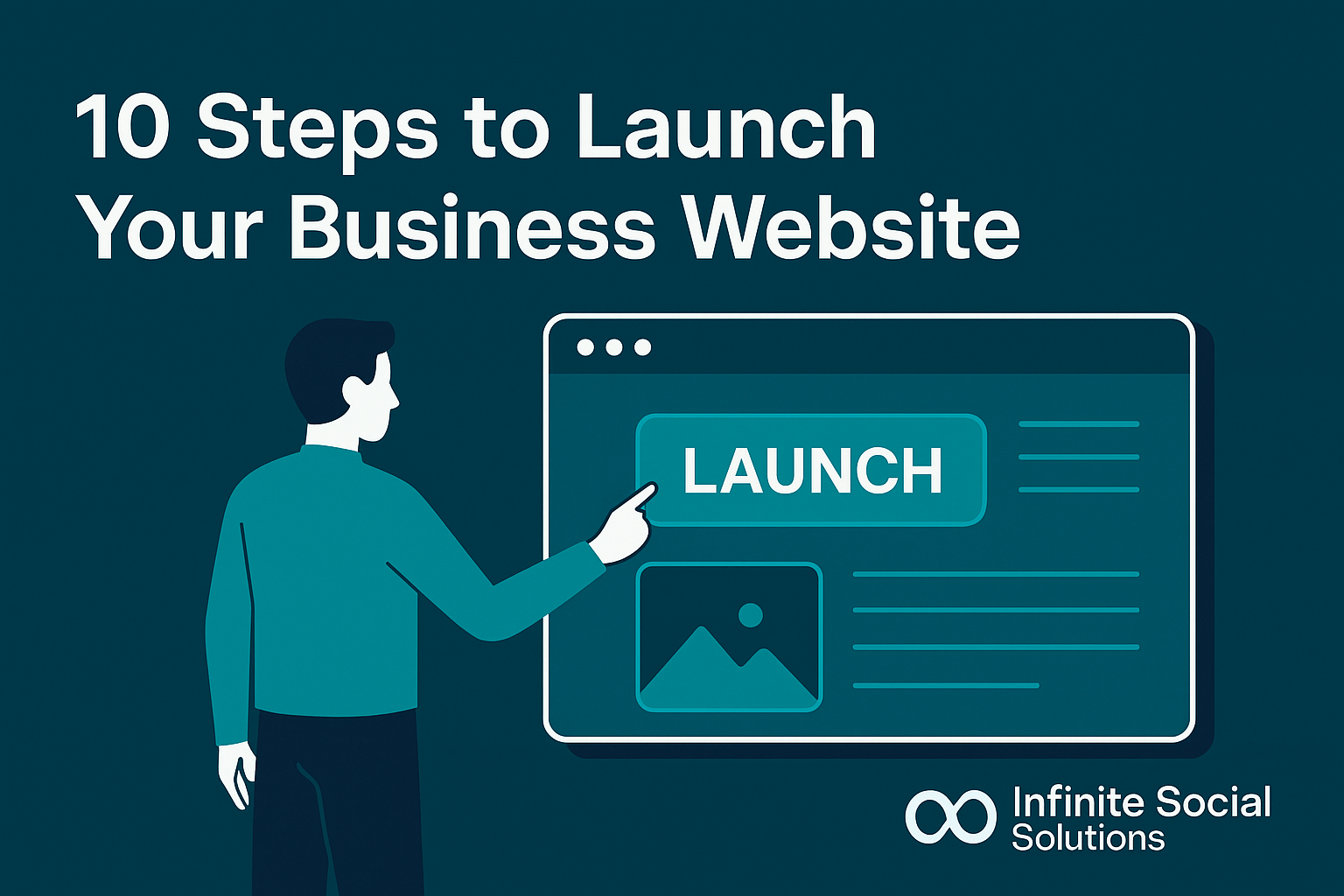Launching a business website is one of the smartest moves you can make for your brand. Whether you’re building it for lead generation, online sales, or simply sharing information, a professional website helps you reach more people and establish credibility.
Here’s a clear, step-by-step guide to get your business online quickly and effectively.
1. Define Your Website Goals
Before you start building, decide what your website should achieve. Do you want to generate leads, sell products, or provide key information about your services? Identify your target audience and list the must-have features—like a contact form, online store, or blog.
2. Choose a Domain Name
Pick a domain name that represents your business and is easy to remember. Keep it short, simple, and relevant. Register it through trusted providers like GoDaddy, Namecheap, or Google Domains.
3. Select a Web Hosting Service
Your hosting provider affects speed, reliability, and security. Choose an option that fits your needs—shared hosting for budget-friendly sites, or VPS/managed hosting for more control. Look for great uptime, customer support, and scalability.
4. Plan Your Website Structure
Outline your main pages, like Home, About, Services, and Contact. Create a simple navigation menu and user flow that makes it easy for visitors to find what they need.
5. Design & Build Your Website
Use a site builder like Wix, Squarespace, or Shopify for an easy setup—or WordPress if you want full control and customization. Align the design with your brand colors, logo, and fonts. Always ensure your site loads fast and works seamlessly on mobile devices.
6. Create & Add Content
Write clear, engaging copy for each page. Use high-quality images, graphics, and videos to enhance the user experience. Don’t forget to optimize your content for search engines by adding relevant keywords, titles, and meta descriptions.
7. Set Up Essential Features
Connect your custom domain, set up professional email addresses (like info@yourdomain.com), integrate Google Analytics for tracking, and install an SSL certificate for security.
8. Test Before Launch
Check every link, form, and interactive feature. Test your site speed, and make sure it works across all major browsers and devices.
9. Launch the Website
Once everything looks good, make your site live! Announce your launch through social media, email, and any other marketing channels you use.
10. Maintain & Update Regularly
A website isn’t “done” after launch. Keep your content fresh, update plugins and software, back up your data, and use analytics to see what’s working—and improve over time.
Launching a website doesn’t have to be overwhelming. By following these steps, you’ll create a strong online presence that helps your business grow.

